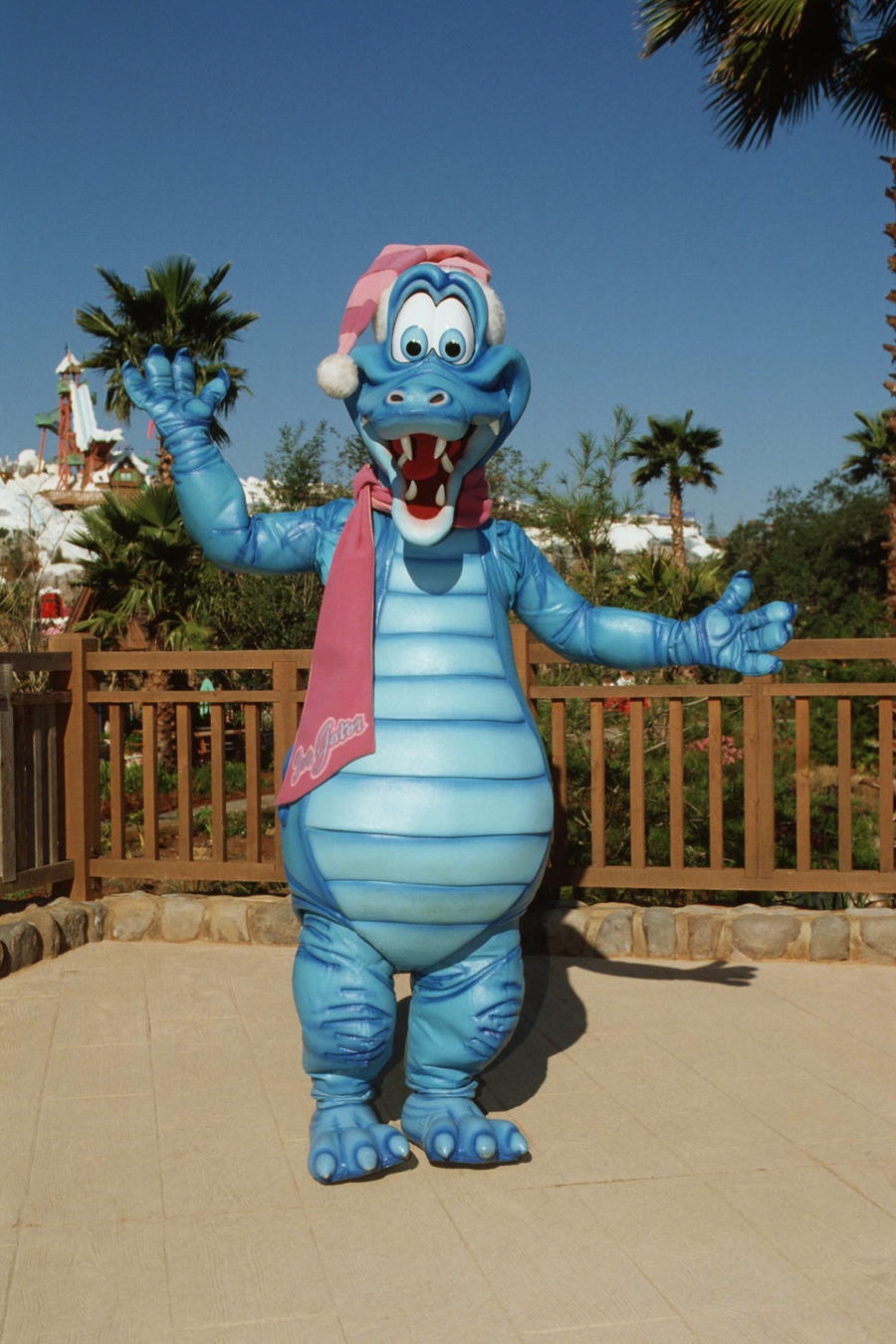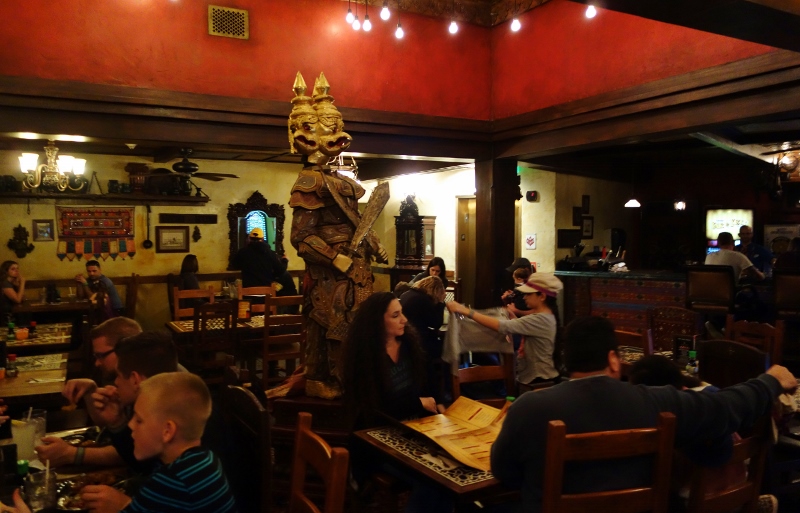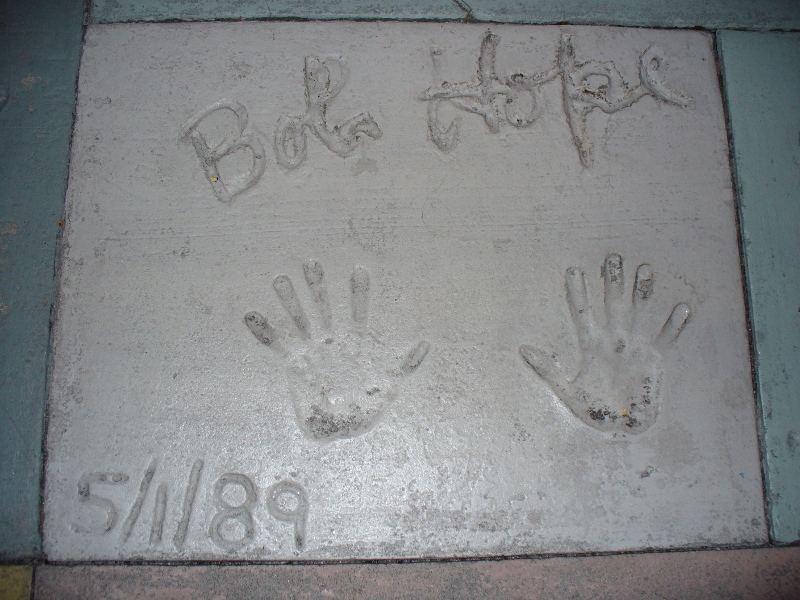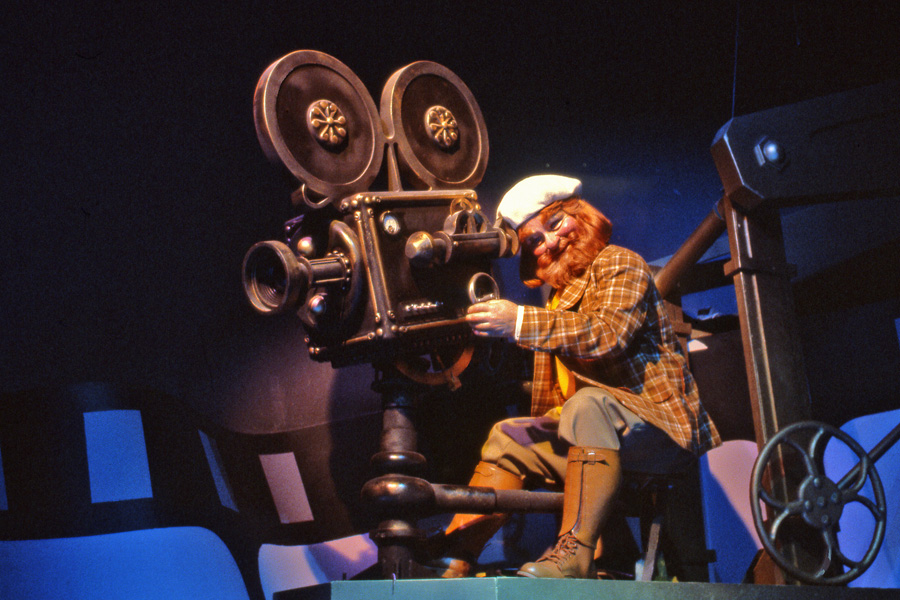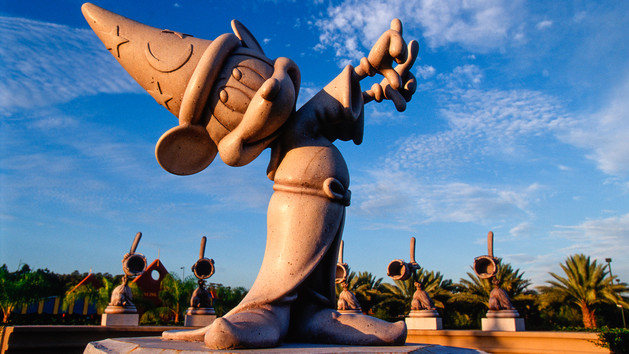Category — A Friday Visit with Jim Korkis
A Friday Visit With Jim Korkis: Blizzard Beach
Welcome back to Fridays with Jim Korkis! Jim, the dean of Disney historians and author of Jim’s Gems in The easy Guide, writes about Walt Disney World history every Friday on yourfirstvisit.net.
THE STORY OF BLIZZARD BEACH
By Jim Korkis

Walt Disney World saw both disappointed guests as well as potential profits going somewhere else.
Walt Disney Imagineering was given the task of developing a concept for another Walt Disney World water park. Several different ideas were proposed but none of them matched the depth and whimsy of Typhoon Lagoon.
Imagineer Eric Jacobson’s office was filled with a collection of little snow domes from his travels. One day, as he was distractedly playing with one of the globes, shaking it up so that the snow swirled around the interior tableau, he mused, “Too bad we can’t make a park out of one of these for guests to beat the Florida heat.”
While his peers considered it a joke, it was so strong a concept that they kept coming back to the idea.
According to Disney legend, Blizzard Beach was created by a meteorological phenomenon:
One balmy day, a freak winter storm developed over the western end of the Walt Disney World Resort and covered the area with a thick blanket of powdery white snow. Before you could say ‘hot cocoa,’ plans were underway for Florida’s first ski resort.
Ski lifts were put up, toboggan runs were laid down and an entire resort area blossomed around the mountain of snow. Yet before the first skier could strap on a pair of boots and stick his poles into the snow, the temperatures returned to their normal Florida levels and the powdery snow quickly turned into slippery slush. The ski resort operators saw their dream melting down the hillside.
The operators were preparing to cut their losses and walk away. However, they were interrupted by an echoing ‘YAHHOOO!!!’ coming from the mountain of melting snow. They looked up to see a blue alligator, wearing a red scarf and gold innertube, careening down the mountain at top speed. The alligator was blue because he was frozen from the cold and just stayed that color when things warmed up.
Ice Gator, who then became the mascot of the area, landed in a pool of melted snow at the base of the mountain with a thunderous splash. The ski resort operators suddenly saw the park’s potential, and the mountain of snow became Blizzard Beach, “the most slushy, slippery, exhilarating water park anywhere!”
Slalom courses, bobsled and toboggan runs became downhill waterslides. The creek of melted snow that formed at the base of the mountain became a relaxing tube ride. The chairlift carried swimmers instead of skiers. The ski jump on Mt. Gushmore became the tallest and fastest water slide in the world. The whole ski resort became known as Blizzard Beach.
The park opened on April 1, 1995 and in 2014 hosted over two million guests, making it the third most visited water park in the world, right behind Typhoon Lagoon. It is larger than Typhoon Lagoon with over seventeen slides, a wave pool, an area for pre-teens and an area for children.
Hints of the Ice Gator abound, from the weather vane atop Lottawatta Lodge to his own little cottage along Cross Country Creek. Ice Gator was so popular that at one time he was a walk-around costumed character and was featured on numerous pieces of merchandise.
* * * * *
Thanks, Jim. There’s more elsewhere on the site from Jim on Typhoon Lagoon and Disney’s first water park, River Country. And come back next Friday for even more from Jim Korkis!
In the meantime, check out his books, including The Vault of Walt, Who’s Afraid of the Song of the South?, and The Book of Mouse
, and his contributions to The easy Guide to Your First Walt Disney World Visit, all published by Theme Park Press.
Follow yourfirstvisit.net on Facebook or Google+ or Twitter or Pinterest!!
September 11, 2015 No Comments
A Friday Visit With Jim Korkis: The Backstory of Yak & Yeti
Welcome back to Fridays with Jim Korkis! Jim, the dean of Disney historians and author of Jim’s Gems in The easy Guide, writes about Walt Disney World history every Friday on yourfirstvisit.net.
THE BACKSTORY OF YAK & YETI AT DISNEY’S ANIMAL KINGDOM
By Jim Korkis

According to the Imagineers, the restaurant is situated at the base of Mt. Everest in the small village of Anandapur, near a highly traveled road used by tourists, researchers, pilgrims, and traders. Its origin? Well, a wealthy merchant from Anandapur, Arjun, fell on hard times. As a result, he converted his regal home into a fine hotel and restaurant hoping to be able to make a living from these travelers.
The original two story stone house, painted purple, was built in June 1924. As unexpected success came to Arjun’s new enterprise he continued to expand the building haphazardly including adding an authentic Indian marble pavilion on one end and allowing the original garden and patio to become part of the interior of the restaurant. In the lush garden adjacent to the pavilion is a collection of rare and revered lingam stones.
That success may be in part because Arjun wisely placed a statue of Ganesha, the Hindu deity known to be a “remover of obstacles” that looks like a red elephant, in the lobby.
The hotel is the kind of boutique hotel that wealthier adventure travelers might seek out in India. While they rest at the hotel during their journeys, the owner and other families reside there as well. Details include luggage at a check-in desk and signage for rooms and hotel guests.
The décor as well as the furniture is an amalgamation of mismatched artifacts Arjun and his family have collected over their years of travel in Southeast Asia.
Those artifacts displayed prominently throughout Yak & Yeti are authentic and were gathered from around Southeast Asia by Schussler Creative, the group responsible for designing the location for Landry’s Restaurants, who owns and operates Yak and Yeti. (Landry’s also owns and operates the Rainforest Café and T-Rex Restaurant.)
The theming for Yak &Yeti is more subtle and subdued than at those two restaurants but no less effective and immersive. Because it “originally” was a dwelling, the dining area is spread over the several small rooms of a house rather than just one large space, making it a more intimate experience.
All the work was done in association with Walt Disney Imagineering so that it blended with the existing mythology that had been created for the area. There are statues, ceremonial costumes, puppets, bowls, vases, antique furnishings, cabinets filled with knickknacks and much more.
Some items were fabricated to help tell the story, like the portrait of the current rajah and his wife that also appears elsewhere in Anandapur, including in the buildings of Himalayan Escapes Tours & Expeditions.
Pictures of the royal couple are required by law to be posted by businesses. They would be purchased from the government, making the portraits both a business license and tax. While the couple is fictional, the practice was real in areas that Imagineers studied.
“Detail is there to make you believe in the reality of the story you’re immersed in,” stated Imagineer Joe Rohde.
Yak & Yeti opened November 14, 2007 and is the only non-Disney restaurant inside the park.
“The sights, sounds and energy of this novel dining destination will transport guests to another culture,” said Marty Sherman, Landry’s General Manager. “The moment diners arrive at Yak & Yeti, they will feel like they’ve stepped into an authentic Himalayan village. It is a place to immerse yourself in a culture that is mysterious, exotic and exciting.”
* * * * *
Thanks, Jim. My sister and my dad and I ate at Yak & Yeti earlier this year…I’ve got to get that review posted! But my sister and I loved it, my dad was less keen on his curry. (My sister and I tasted it and thought it was great…)
Come back next Friday for even more from Jim Korkis!
In the meantime, check out his books, including The Vault of Walt, Who’s Afraid of the Song of the South?, and The Book of Mouse
, and his contributions to The easy Guide to Your First Walt Disney World Visit, all published by Theme Park Press.
Follow yourfirstvisit.net on Facebook or Google+ or Twitter or Pinterest!!
September 4, 2015 No Comments
A Friday Visit With Jim Korkis: Bob Hope at the Magic Kingdom
Welcome back to Fridays with Jim Korkis! Jim, the dean of Disney historians and author of Jim’s Gems in The easy Guide, writes about Walt Disney World history every Friday on yourfirstvisit.net.
BOB HOPE AND THE OPENING OF THE MAGIC KINGDOM
By Jim Korkis

Hope entered the Contemporary Hotel via monorail and launched into his monolog.
“It’s really two buildings leaning against each other. And I want to congratulate the architect … Dean Martin. I have a lovely room with complete privacy, except in the bathtub which Donald Duck shares with me. Have you ever tried bathing with a duck who was playing with his rubber man?
“I ordered lunch from room service. Snow White brought it in and I was afraid to eat the apple. I don’t dare drink the water because that was delivered by Pluto.
“This is the biggest vacation-entertainment complex in the world. And to think it all started with a gentle mouse, a bad-tempered duck and seven mixed-up dwarfs. It’s a fantastic achievement. They took a swamp and turned it into a Magic Kingdom. It wasn’t easy. Have you ever tried to relocate 8,000 angry alligators?”
“Walt Disney always believed in the beauty and natural wonders of the world. But he felt as we passed through that we should try to add a little wonder and beauty to it. Maybe you’ll understand that Walt’s dream was just a beginning. The dream doesn’t stop here. This is the start of it. I think you’ll want to tell your grandchildren you were there when it happened.”
Near the end of the program, Hope returned with an even more moving tribute:
“Walt Disney World is the culmination of a lifetime devoted to bringing joy and excitement and laughter to children and adults in America and throughout the world. There is a spirit here everywhere. All of this is Walt.
“This is what Walt wanted for all of us … an escape from our aspirin existence into a land of sparkles and lights and rainbows. Walt Disney loved America. He loved its children and their moms and pops. Walt Disney loved America because his dreams came true. The entire world owes Walt a great debt. He achieved much, but perhaps his greatest accomplishment is that he made children of us all.”
Tom Nabbe, who was in charge of the monorails during the opening of Walt Disney World remembered:
“For the filming of the opening special, we drove Bob Hope into the Contemporary Hotel concourse on the monorail to do his bit. I was standing on the platform waiting for him when one of the co-ordinators came up to me. These were the days when the monorails had individual air conditioners in them and they made quite a noise.
“So this guy says, ‘Tom, the noise is drowning out Bob’s monologue. Can you do something about it?’ And I went over and hit the power button. Then I picked up the phone and called the monorail roundhouse and said, ‘You’d better get over here because we’ve got to haul Bob Hope out of this building in fifteen minutes and you need to re-set the rectifiers because I just turned them off.’
“And they got over and were standing by so that the minute Hope finished they could re-set the rectifiers. The only way I could shut off the air conditioning units on the train was to kill the power to the train which I did. Then I had to get it started back up so we could take Hope on his merry way back to the Polynesian.”
Bob Hope loved the many worlds of Disney and often appeared at Disney events like the opening of the Disney MGM Studios in 1989. The Bwana Bob merchandise cart at the entrance of Adventureland was named in honor of Bob Hope’s 1963 comedy film Call Me Bwana.
* * * * *
Thanks, Jim. Strange to think that we are just about five years away from the Magic Kingdom’s 50th anniversary…
Come back next Friday for even more from Jim Korkis!
In the meantime, check out his books, including The Vault of Walt, Who’s Afraid of the Song of the South?, and The Book of Mouse
, and his contributions to The easy Guide to Your First Walt Disney World Visit, all published by Theme Park Press.
Follow yourfirstvisit.net on Facebook or Google+ or Twitter or Pinterest!!
August 28, 2015 No Comments
A Friday Visit With Jim Korkis: Figment and Dreamfinder
Welcome back to Fridays with Jim Korkis! Jim, the dean of Disney historians and author of Jim’s Gems in The easy Guide, writes about Walt Disney World history every Friday on yourfirstvisit.net.
THE ORIGINAL FIGMENT AND DREAMFINDER
By Jim Korkis

For more than fifteen years, Dreamfinder delighted guests of all ages both in the attraction itself as an audio-animatronic figure, and also as a walk-around character carrying a mischievous Figment puppet who might snatch a hat from a guest and fling it in the air.
For years, Dreamfinder and Figment were considered the official original spokes-characters for Epcot. Yet after 1998, Dreamfinder disappeared and Figment almost vanished as well.
Who were Figment and Dreamfinder? The little purple dragon, Figment, was the physical representation of being “a figment of the Imagination.”
Dreamfinder was his husky human companion and friend with a full red beard, long blue coat, black top hat and broad smile (supposedly modeled after the physical appearance of Imagineer Joe Rohde).
Figment and Dreamfinder were actually born in a concept for a planned-but-never-built section of Disneyland to be called Discovery Bay. In that area there was to be Professor Marvel’s Gallery of Illusion, “a fascinating visit with the foremost collector of the exotic, weird and whimsical from all over the world” according to a press release from October 1976.
Entering through a sideshow wagon, guests would find themselves in a Carousel of Progress revolving theater where an audio-animatronic Professor Marvel would display all manner of oddities that he has collected including his collection of dragons.
A small statue of the magnificent white bearded and mustached Marvel was built with a black top hat, gold vest, red tie and monocle. Cradled in his right arm was a small green dragon that Marvel bred as a hobby.
However, not long after the press release, every available resource of the Disney Company was redirected to both the Epcot and the Tokyo Disneyland projects,and the Discovery Bay project was shelved.
As Imagineer Steve Kirk remembered, “I was in my office. (Imagineer) Tony Baxter was in with the Kodak folks as being potential sponsors for some kind of Epcot pavilion. He ran into my office in the middle of this meeting and said ‘Can I borrow the Dream Keeper?’
“And he grabbed the statue and took it in to them to show. They said ‘that’s great, do we get the dragon, too?’ The only issue was that, at the time, the dragon was painted green. Figment was green. And Kodak thought that represented a little too much of a Fuji Film (Kodak’s chief competitor who used the color green prominently on its packaging) connection, so he turned purple as a result of that.”
Tony Baxter recalled that “[Dreamfinder] was a Santa Claus-type who is wise and older and knows all the great things, a great thinker. But we needed a child-like character that had like a one second attention span and was a little crazy.”
To provide the voice for Dreamfinder, WED hired actor Chuck McCann who based the voice of Dreamfinder on actor Frank Morgan as the mighty Wizard in MGM’s “The Wizard of Oz.” Actor Billy Barty provided the voice of Figment.
Actor Ron Schneider appeared as Dreamfinder with a Figment puppet on opening day where he was interviewed by Bryan Gumbel on the NBC Today show. (Schneider’s story is here.) Later, Steve Taylor became Schneider’s understudy and then took over the role for almost fifteen years when Schneider went on to other projects.
Taylor was significantly shorter than Schneider so it was just assumed that like Figment, the character could be any size he wanted. That’s the true power of imagination.
* * * * *
Thanks, Jim. Figment and Dreamfinder more or less disappeared after a highly controversial refurb of the ride in 1998.
Come back next Friday for even more from Jim Korkis!
In the meantime, check out his books, including The Vault of Walt, Who’s Afraid of the Song of the South?, and The Book of Mouse
, and his contributions to The easy Guide to Your First Walt Disney World Visit, all published by Theme Park Press.
Follow yourfirstvisit.net on Facebook or Google+ or Twitter or Pinterest!!
August 21, 2015 No Comments
A Friday Visit With Jim Korkis: Fantasia Gardens
Welcome back to Fridays with Jim Korkis! Jim, the dean of Disney historians and author of Jim’s Gems in The easy Guide, writes about Walt Disney World history every Friday on yourfirstvisit.net.
FANTASIA GARDENS MINI GOLF
By Jim Korkis

“Some of them (the items in the Fantasia Gardens’ course) were no-brainers,” claimed Walt Disney Imagineering (WDI) Senior Concept Designer Joe Lanzisero in May 1996 after the area opened. “Things people identify with when they think of Fantasia: elephants and hippos, snowflakes, mushrooms, Mickey and the brooms. We wanted soft, classical sequences that were more garden-like and fit the environment. That’s why there’s no Rite of Spring section (with its oversized dinosaurs).”
The final plan included five sections from Fantasia that fit the gentle garden theme: Toccata and Fugue, The Nutcracker Suite, The Pastoral Symphony, Dance of the Hours, and finally, The Sorcerer’s Apprentice as the dramatic conclusion.
For Fantasia Gardens, Joe Lanzisero was the senior concept designer along with another WDI concept designer, Robert Coltrin, who wrote the verses posted at each hole.
It was one of the first projects where WDI merged forces with the Disney Development Company (DDC). DDC’s Bob Kamerlander as construction manager and DDC’s Paul Katen as project manager were assigned to the project. Jack Wolfe of DDC and Charlie Hardiman of WDW were also involved in translating the WDI concepts into a physical reality.
As Kamerlander stated, “I believe our relationship demonstrated the strengths of each organization: the creative talent that dreams up the Fantasia Gardens and the development expertise that transforms the concept into a terrific guest experience, as well as a financially viable asset for the Company.”
However, as with any project, not everything went smoothly. At one point, budget constraints threatened to eliminate the home of Zeus from the plans, but some creative re-working of the figures allowed Mount Olympus to be built. Lanzisero considered it to be the focal point that organized the rest of the design of the course.
The 10th hole, where Bacchus is pouring wine down a hill, is a more difficult shot than originally intended by the Imagineers.
“After a misinterpretation of the design, the hill ended up being elevated about three feet higher than the drawings. But what it lacks in playability, it really makes up for in aesthetics,” stated Lanzisero.
Coltrin added, “It is pretty steep, like a 45-degree angle. You putt up the hill and the ball comes down the other side like a pachinko game, going ‘bink, bink, bink, bink’ as it hits the bubbles in the wine that’s he’s pouring down the hill.”
The goal was to orchestrate each hole with varying levels of difficulty. Some holes are fairly simple so that guests get an immediate payoff — for example, where the statue of a little faun plays a tune on his pipe when the ball drops into the hole.
“Oh, the wonders of modern electronics!” enthused Coltrin. “Digitize the music, put into microchip, and push it through a 50-watt amp and two little, tiny speakers play it every time a ball drops in the cup. Nothing to it!”
Some holes are more interactive than others. One of the favorites of the Imagineers is the 16th hole, with the statues of the brooms standing above the fairway.
“Everyone gets the payoff here. You don’t have to do anything special to get the brooms to dump the water. The water squirts not only over the putting area, but over where the people walk, too. This is programmed so that the buckets shoot water in sequence, but if you make it to the putting green in one shot, the ball has to go by three sensors so all the buckets splash at one time,” smiled Lanzisero.
* * * * *
Thanks, Jim. And come back next Friday for even more from Jim Korkis!
In the meantime, check out his books, including The Vault of Walt, Who’s Afraid of the Song of the South?, and The Book of Mouse
, and his contributions to The easy Guide to Your First Walt Disney World Visit, all published by Theme Park Press.
MORE DISNEY WORLD HISTORY POSTS FROM JIM KORKIS
- “Summer Magic” on Main Street
- Muppets and Mama Melrose
- Peter Dominick and the Wilderness Lodge
- Dixie Landing and Port Orleans Riverside
- The History of Splash Mountain
- The First Disney World Hotel
- The “Sharing the Magic” Statue
- The First Disney World Monorails
- The Water Park River Country
- The Epcot Fountain
- The Fireplace at the Wilderness Lodge
- Sid Cahuenga at Disney’s Hollywood Studios
- Spaceship Earth
- Downtown Disney
- The Missing Resorts
- Echo Park Homages
- Typhoon Lagoon
Follow yourfirstvisit.net on Facebook or Google+ or Twitter or Pinterest!!
August 14, 2015 1 Comment
A Friday Visit With Jim Korkis: Wilderness Lodge Sculptor William Robertson
Welcome back to Fridays with Jim Korkis! Jim, the dean of Disney historians and author of Jim’s Gems in The easy Guide, writes about Walt Disney World history every Friday on yourfirstvisit.net.
WILDERNESS LODGE SCULPTOR WILLIAM ROBERTSON
By Jim Korkis

A name you can learn about today is that of sculptor William Robertson, whose outstanding skills are on prominent display in the lobbies of both Disney’s Wilderness Lodge and the Villas at the Wilderness Lodge.
Robertson was a Disney character sculptor before becoming self-employed. Disney hired him to build frames for topiaries, which he did in the backyard of his College Park home. One of those topiaries is the fourteen foot long bison out in front of the entrance of the Wilderness Lodge.
Robertson was also responsible for the topiaries in the Johnny Depp film, Edward Scissorhands (1990).
Displayed in the posts of the Wilderness Lodge lobby are many carvings by Robertson, showing along their height four corresponding levels of animal life living in the wilderness.
At the lowest level, you find the creatures of the field and meadows, such as the turkey, raccoon, squirrel and rabbit. The animals on the next are those on the lower mountain, such as the wolf, pronghorn antelope, bison and elk.
On the third are those of the high mountain level such as the mountain goat, sheep, bear and mountain lion. The highest level has the birds of prey such as the falcon, American bald eagle, hawk and owl.
It took four tons of wood to create these creatures. On average, it was ten days to carve each animal using an electric saw, rotary saw, a chisel and a hammer.
Robertson did massive research and then rendered drawings that he used to create scale clay or plaster models as guides.
Mountain goats and some Rocky Mountain sheep look similar so Robertson had to emphasize the subtle differences in head shapes.
Disney suggested animals for Robertson, but the artist said that after that point he had a free hand.
”I had to know how to fit the animals into the trees,” Robertson said. ”Each animal had to be carved around the limbs, knots and rotten spots. There was no way to change the tree.”
Robertson said he wanted to “show the mark of the hands of the artist—not slick but a rough, human feeling”.
”Disney will try and do something artificially to meet fire codes or to get it to be weather-resistant,” Robertson said. ”But in this instance everything was done in the traditional way, by the artist, by hand.”
Every night during the six months before the hotel’s Memorial Day 19994 opening, Robertson climbed scaffolds to chisel into the pine logs. ”We finished the day before the hotel opened,” he laughed.
Robertson’s sculpture work can also be seen on the six brass animals at the check-in desk that were purposely positioned at a children’s level so they could be petted by curious youngsters.
The beavers in the elevator holding a long stick that is used as a railing are also the work of the sculptor, who at one time worked with Disney Legend Blaine Gibson, renowned for his Disney sculpting.
As a bit of whimsy, Robertson also took months to carve the cedar character totem pole outside the gift shop that features Mickey Mouse, Goofy, Donald Duck and Humphrey the Bear who was the official mascot of the resort.
”This wasn’t necessarily just another traditional Disney image,” he said. ”That was rather exciting as an artist. I had freedom to have a little fun. ‘I called an artist in Oregon to get advice on how to handle that kind of wood. I’d never have chosen cedar. It has to be kept sopping wet to cut it. But the other totem poles were also done in cedar.”
”The only problem was there was a lot for work to be done within a short period of time,” he remembered.
In seven months, Robertson went from working on eight-inch models approved by Disney directly to completing all the wood and bronze figures without ever making full scale models.
Robertson also came out of retirement to carve the animals in the lobby of the Villas at Wilderness Lodge that opened in the fall of 2000.
* * * * *
Thanks, Jim. For more from Jim on the Wilderness Lodge, see this. And come back next Friday for even more from Jim Korkis!
In the meantime, check out his books, including The Vault of Walt, Who’s Afraid of the Song of the South?, and The Book of Mouse
, and his contributions to The easy Guide to Your First Walt Disney World Visit, all published by Theme Park Press.
MORE DISNEY WORLD HISTORY POSTS FROM JIM KORKIS
- “Summer Magic” on Main Street
- Muppets and Mama Melrose
- Peter Dominick and the Wilderness Lodge
- Dixie Landing and Port Orleans Riverside
- The History of Splash Mountain
- The First Disney World Hotel
- The “Sharing the Magic” Statue
- The First Disney World Monorails
- The Water Park River Country
- The Epcot Fountain
- The Fireplace at the Wilderness Lodge
- Sid Cahuenga at Disney’s Hollywood Studios
- Spaceship Earth
- Downtown Disney
- The Missing Resorts
- Echo Park Homages
- Typhoon Lagoon
Follow yourfirstvisit.net on Facebook or Google+ or Twitter or Pinterest!!
August 7, 2015 1 Comment


